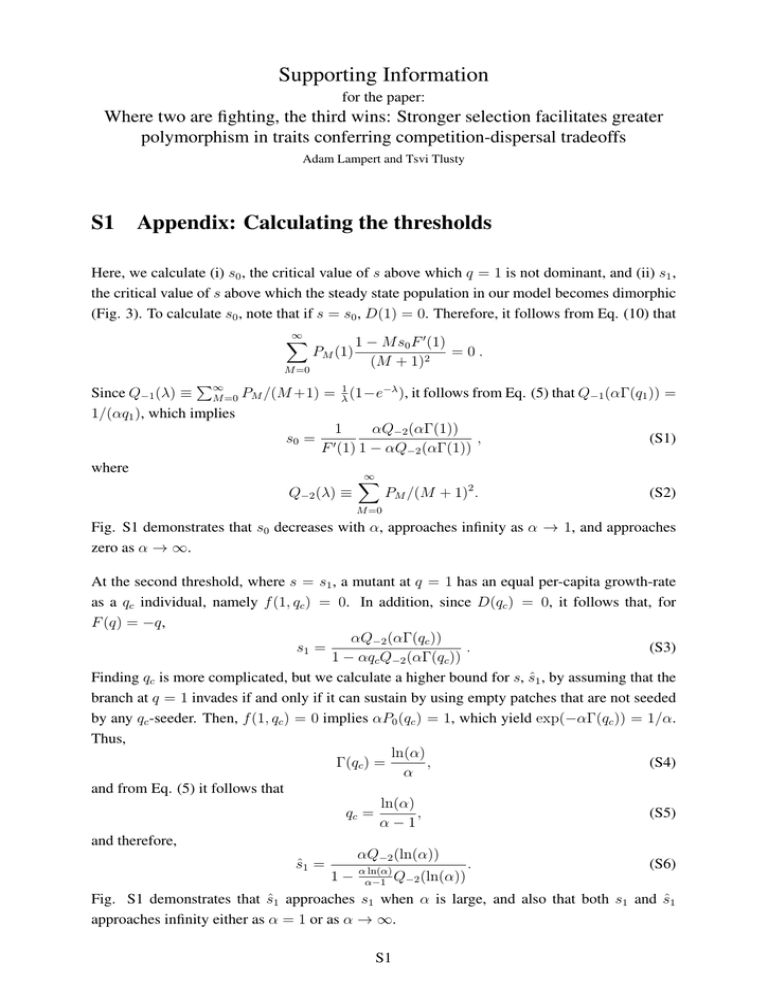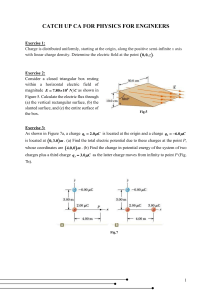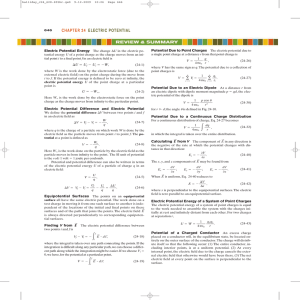S1 Appendix.
advertisement

Supporting Information for the paper: Where two are fighting, the third wins: Stronger selection facilitates greater polymorphism in traits conferring competition-dispersal tradeoffs Adam Lampert and Tsvi Tlusty S1 Appendix: Calculating the thresholds Here, we calculate (i) s0 , the critical value of s above which q = 1 is not dominant, and (ii) s1 , the critical value of s above which the steady state population in our model becomes dimorphic (Fig. 3). To calculate s0 , note that if s = s0 , D(1) = 0. Therefore, it follows from Eq. (10) that ∞ X M =0 PM (1) 1 − M s0 F 0 (1) =0. (M + 1)2 P∞ Since Q−1 (λ) ≡ M =0 PM /(M +1) = λ1 (1−e−λ ), it follows from Eq. (5) that Q−1 (αΓ(q1 )) = 1/(αq1 ), which implies 1 αQ−2 (αΓ(1)) s0 = 0 , (S1) F (1) 1 − αQ−2 (αΓ(1)) where ∞ X Q−2 (λ) ≡ PM /(M + 1)2 . (S2) M =0 Fig. S1 demonstrates that s0 decreases with α, approaches infinity as α → 1, and approaches zero as α → ∞. At the second threshold, where s = s1 , a mutant at q = 1 has an equal per-capita growth-rate as a qc individual, namely f (1, qc ) = 0. In addition, since D(qc ) = 0, it follows that, for F (q) = −q, αQ−2 (αΓ(qc )) s1 = . (S3) 1 − αqc Q−2 (αΓ(qc )) Finding qc is more complicated, but we calculate a higher bound for s, ŝ1 , by assuming that the branch at q = 1 invades if and only if it can sustain by using empty patches that are not seeded by any qc -seeder. Then, f (1, qc ) = 0 implies αP0 (qc ) = 1, which yield exp(−αΓ(qc )) = 1/α. Thus, ln(α) Γ(qc ) = , (S4) α and from Eq. (5) it follows that ln(α) qc = , (S5) α−1 and therefore, αQ−2 (ln(α)) . (S6) ŝ1 = ln(α) 1 − αα−1 Q−2 (ln(α)) Fig. S1 demonstrates that ŝ1 approaches s1 when α is large, and also that both s1 and ŝ1 approaches infinity either as α = 1 or as α → ∞. S1




